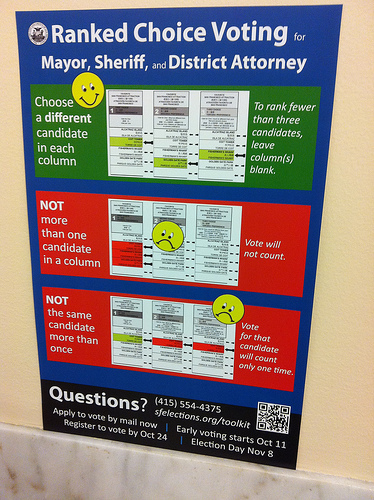In November San Franciscans choose their next mayor through an electoral process called ranked-choice voting. Also known as “instant runoff voting,” voters will pick three candidates (instead of one), and rank them in order of preference, eliminating the need for a separate runoff election. It’s the first time San Francisco will use this system to decide a competitive mayor’s race, and many are waiting to see how well it all works out.
Not surprisingly, ranked-choice voting has its discontents; some candidates stand to benefit more than others, and a variety of opponents have cried foul, calling the system too complex and undemocratic. Last year, the system survived a court challenge alleging that it violated voters’ rights.
The biggest issue at play is that you no longer need to be the top vote-getter in the first round in order to win the election; instead you need the most-combined first, second, and third choice votes. And that significantly changes the calculus. Factor in that there are a grand total of 16 candidates running for mayor this year, and you’ve got yourself a pretty thick electoral swamp to wade through.
Read the complete story at KQED News.










